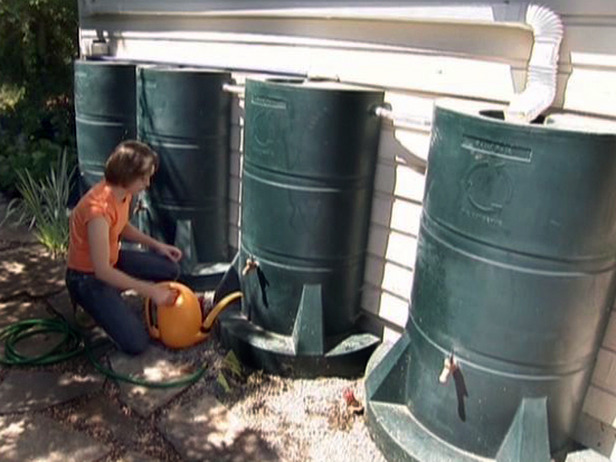Don’t miss:
– EPA Whistleblower On Gulf Health Risk Cover-Up: ‘People Who Work Near Corexit Are Hemorrhaging Internally.’
The combination of millions of gallons of oil and dispersants has made large areas of the Gulf toxic and dangerous, marine toxicologist Ricki Ott saying if she lived there with children she’d leave – based on her firsthand experience after the 1989 Prince William Sound, Alaska Exxon Valdez disaster and subsequent research, documented in her books titled, “Sound Truth and Corporate Myth$: The Legacy of the Exxon Valdez Oil Spill” and “Not One Drop – Betrayal and Courage in the Wake of the Exxon Valdez Oil Spill.”
Ongoing today, the legacy includes criminal negligence, bankruptcies, destroyed lives and livelihoods, domestic violence, severe anxiety, trauma, PTSD, drug and alcohol abuse, serious illnesses, suicides, massive loss of plant and wildlife, and vast ecological destruction from the 30 million or more gallons spilled, the State of Alaska’s conservative estimate, not Exxon’s 11 million figure, its lowball claim to hide the disaster’s magnitude and minimize its liability.
The Gulf catastrophe is infinitely greater, estimates up to three or more Exxon Valdez incidents (using Exxon’s figure) a week until capped. Yet some experts think another seabed hole (a few miles from the Macondo well) is emitting 100,000 or more barrels daily, greatly compounding the growing disaster, added to more by numerous small leaks, five or more alone in BP’s Macondo well – the “well from hell,” according to some.
Geologist Chris Landau is one, telling Petroleum World that “BP has drilled into a deep-core oil volcano that cannot be stopped, regardless of the horizontal drills the company claims will stop the oil plume in August.”
Ocean Energy Institute Founder Matthew Simmons is another, telling Bloomberg we’ve killed the Gulf of Mexico – its $2.2 trillion economy by depleting oxygen, decimating aquatic life and poisoning the food chain. We’ve also created a public health crisis, problems showing up first in cleanup workers experiencing dizziness, fainting, nausea, nosebleeds, vomiting, coughing, headaches, stomach upset, and difficulty breathing, compounded by heat, fatigue, hydrocarbon smell, and combined toxicity of oil and dispersants.
Besides other toxins, crude oil contains benzene, in even small amounts associated with leukemia, Hodgkin’s Lymphoma, other serious blood and immune system diseases, ventricular fibrillation, congestive gastritis, toxic gastritis, pyloric stenosis, myalgia, kidney damage, skin irritation and burns, swelling and edema, vascular congestion in the brain, and lethal central nervous system depression among others, depending on length and degree of exposure.
The EPA’s safe level is 4 parts per billion (ppb), yet Gulf levels reach or top 3,000, smelled hundreds of miles away, meaning residents inhaling fumes are ingesting dangerous toxins, raising their risk for serious future health problems, some potentially lethal.
Long-term exposure to benzene, ethylbenzene, xylene, toluene and other solvents may cause infertility, low-birth weight babies, miscarriages, decreased cognitive function, psychomotor coordination problems, weakened immunity, and increased risk of depression, insomnia, certain cancers, and other diseases.
In their book Generations at Risk, Ted Schettler, Gina Solomon, Maria Valenti and Annette Huddle reviewed the physical properties of solvents, enabling humans to ingest them saying:
“They evaporate in air at room temperature and are therefore easily inhaled; they penetrate the skin easily; and they cross the placenta, sometimes accumulating at higher doses in the fetus. In addition, many solvents (like benzene) enter breast fat and are found in breast milk, sometimes at higher concentrations than in maternal blood.”
“Solvents contaminating drinking water enter the body through skin absorption and inhalation in the shower, as well as through drinking water. In fact, the total exposure from taking a ten minute shower in contaminated water is greater than….drinking two quarts of the same water. Solvents are generally short-lived in the human body, lingering for no more than several days.” When longer-term, however, much greater harm results.
Exposure can cause “a range of ill effects, including damage to the skin, liver, central nervous system, lungs, and kidneys. Certain solvents can inhibit blood cell production.” Many are carcinogenic. Glycol ethers can cause birth defects, testicular damage, infertility, and failed pregnancies. Exposed men experience low sperm counts, women reproductive problems, everyone potential serious future health problems.
After the 2002 Galicia, Spain Prestige oil spill and 2007 South Korean Hebei Spirit one, fishermen and cleanup workers suffered from respiratory and central nervous system problems, even genetic damage. After the Exxon Valdez disaster, BP’s then medical director, Dr. Robert Rigg warned:
“It is a known fact that neurological changes (brain damage), skin disorders, (including cancer), liver and kidney damage, cancer of the other organs, and medical complications – secondary to exposure to working unprotected (or inadequately protected) – can and will occur (in) workers exposed to crude oil and other petrochemical by-products.” Short-term symptoms and complaints may be early warnings of serious long-term harm.
Public health specialists Ellen-Marie Whelan and Lesley Russell from the Center for American Progress said:
“We know that Exxon Valdez cleanup workers faced average oil mist exposure that was twelve times higher than government-approved limits, and those who washed the beaches with hot water experienced a maximum exposure 400 times higher than these limits. Many of those workers suffered subsequent health problems, and in 1989, 1,811 workers filed compensation claims, primarily for respiratory system damage, according to the National Institute of Occupational Safety and Health.” Today, we face “what some are calling the worst-ever ecological disaster without an appropriate public health response in place.”
Whelan and Russell also cited the dangers of “controlled burns,” saying “When we aerosolize those oil droplets, they can be breathed in, which can be very damaging to the lungs, and can” irritate the eyes, throat, and cause nausea and vomiting. Early May EPA air tests in the greater Venice, LA area showed toxin levels far exceeding safe standards onshore – 100 – 1,000-fold for volatile organic carbons (VOC), including hydrogen sulfide, and other emitted chemicals.
According to Ott and other experts, if air, land and water toxicity exceeds safe levels, Washington is obligated to evacuate residents, as it would ahead of a dangerous hurricane. “The current situation is a disaster in the making,” so far covered up and unaddressed.
Chemical Dispersants – Compounding the Disaster
According to the EPA:
“Dispersants have not been used extensively in the United States because of possible long term environment effects, difficulties with timely and effective application, disagreement among scientists and research date about their environmental effects, effectiveness, and toxicity concerns.”
Extensive use of them (two million or more gallons so far) is a giant uncontrolled human/wildlife/ecological experiment, especially combined with oil.
Oil is toxic at 11 parts per million (ppm) while Corexit 9500 at only 2.61 ppm, and Corexit 9527 even less, the EPA calling it an acute health hazard. Its main ingredient, 2-butoxyethanol, is a dangerous neurotoxin pesticide known to cause cancer, reproductive problems, birth defects, genetic mutations, blood disorders, and damage to kidneys, liver and central nervous system.
It’s not known if Corexit 9500 contains 2-butoxyethanol. Science Corps.org lists it among its toxic ingredients. For competitive reasons, Nalco, its producer, keeps its formula secret, but what’s disclosed is extremely toxic, including dioctyl sodium sulfosuccinate (DSS), causing severe eye and skin irritation as well as diarrhea, intestinal bloating, cramps and nausea when ingested, including by inhaling fumes. It’s also cytotoxic, especially to liver cells.
Corexit also contain arsenic, cadmium, chromium, mercury, cyanide, and other heavy metals. Dispersing oil with it increases toxicity 11-fold, suggesting a calamitous looming public health disaster, potentially affecting hundreds of thousands of area residents and in other states if toxins spread by rains. More on that below.
Read moreThe Growing Health Crisis in the Gulf of Mexico
























